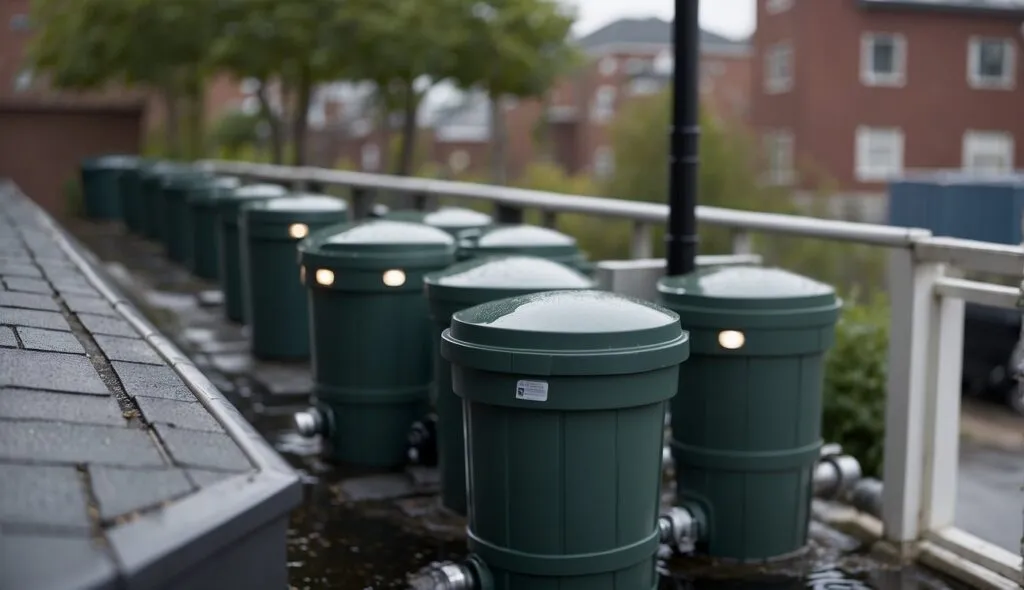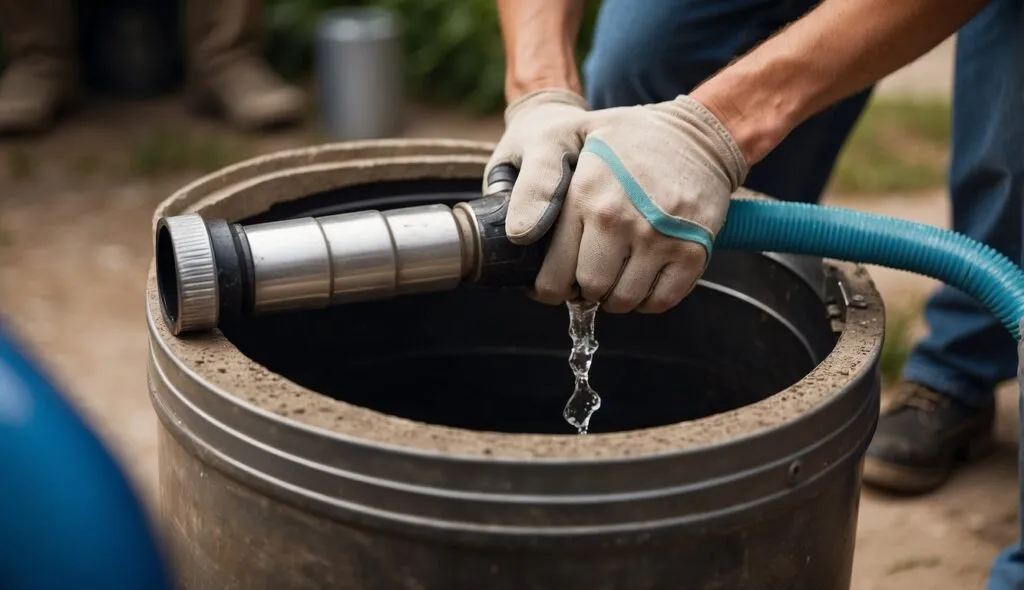Urban rainwater management is an essential aspect of urban water management, which involves the management of rainwater to reduce runoff volume and improve water quality. With the increasing urbanization and climate change, the demand for water is rising, and the availability of water is decreasing, making it essential to manage water resources effectively. Urban rainwater management is an innovative approach that aims to reduce the impact of urbanization on the water cycle by replicating the natural hydrology and water balance of the site.
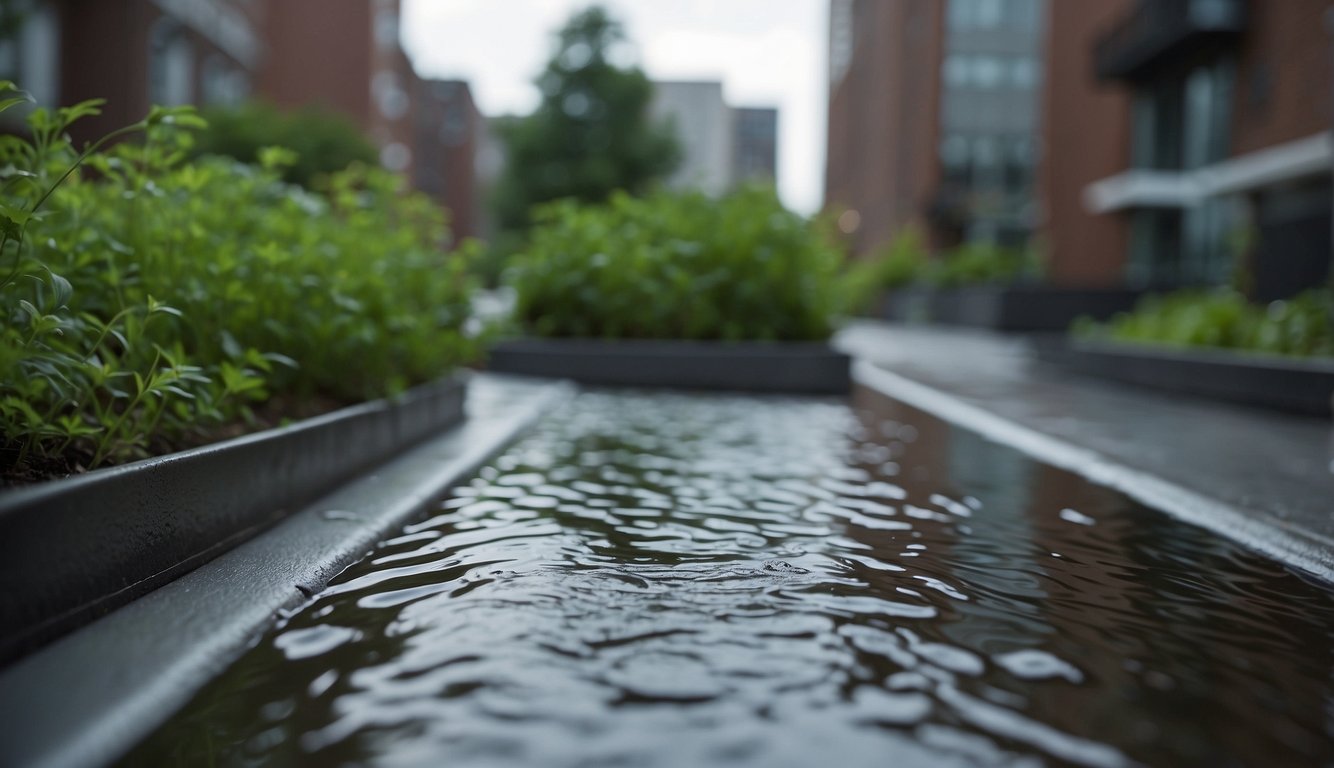
Understanding urban water management is crucial to implementing effective urban rainwater management strategies. Urban water management involves the management of water resources in urban areas, including water supply, wastewater management, and stormwater management. Urban rainwater management is a low impact development strategy that aims to reduce the impact of urbanization on the water cycle by integrating green infrastructure, such as rain gardens, green roofs, and permeable pavements, into the urban landscape.
Integrating green infrastructure into urban rainwater management is essential to implementing effective water conservation techniques. Innovative water conservation techniques, such as rainwater harvesting, can help reduce the demand for potable water and provide an alternative water source for non-potable uses. Policy and legislation play a critical role in promoting and implementing effective urban rainwater management strategies. By incentivizing the implementation of green infrastructure and promoting sustainable urban growth, policymakers can help mitigate the impact of urbanization on the water cycle.
Table of Contents
Key Takeaways
- Urban rainwater management involves the management of rainwater to reduce runoff volume and improve water quality.
- Integrating green infrastructure into urban rainwater management is essential to implementing effective water conservation techniques.
- Policy and legislation play a critical role in promoting and implementing effective urban rainwater management strategies.
Understanding Urban Water Management
In urban areas, water management is a complex task that involves the collection, treatment, distribution, and disposal of water. The challenges of urbanization have made water management even more difficult. In this section, we will discuss the challenges of urbanization and the urban hydrological cycle.
Challenges of Urbanization
Urbanization has led to the development of impervious surfaces such as roads, parking lots, and buildings. These surfaces prevent water from infiltrating into the ground and increase the amount of runoff. Urban runoff can cause flooding, erosion, and pollution. It can also overwhelm urban drainage systems, leading to sewage backups and other problems.
Urbanization has also increased the demand for water resources. As cities grow, they require more water for drinking, sanitation, and industrial processes. This demand can strain water resources, especially in regions with limited water availability.
The Urban Hydrological Cycle
The urban hydrological cycle describes the movement of water in urban areas. In this cycle, precipitation falls onto impervious surfaces and either runs off into storm drains or infiltrates into the ground. Storm drains collect runoff and transport it to treatment facilities or natural water bodies. Infiltrated water can recharge groundwater or flow into streams and rivers.
Urban water management aims to balance the water supply and demand while minimizing the negative impacts of urbanization. This involves managing stormwater runoff, reducing water demand, and improving water quality. Effective urban water management requires collaboration between different stakeholders, including government agencies, water utilities, and community groups.
In conclusion, urban water management is an important and complex task that requires careful planning and management. The challenges of urbanization have made water management even more difficult. However, by understanding the urban hydrological cycle and working together, we can improve water management in urban areas.
Low Impact Development Strategies
Principles of LID
Low Impact Development (LID) is a sustainable approach to managing stormwater runoff that emphasizes on-site natural features to protect water quality. LID strategies include a variety of practices such as green roofs, bioretention, rain gardens, permeable pavements, and other techniques that mimic natural hydrologic processes. These strategies aim to reduce the volume and rate of stormwater runoff, as well as to improve water quality by removing pollutants.
The main principles of LID include:
- Minimizing impervious surfaces to reduce runoff
- Preserving and restoring natural landscape features
- Managing stormwater close to its source
- Using site design techniques to infiltrate, filter, store, evaporate, and detain runoff
- Treating runoff as a resource rather than a waste product
Benefits of Low Impact Development
The benefits of LID go beyond just managing stormwater runoff. Implementing LID strategies can also provide economic, social, and environmental benefits. Some of the benefits of LID include:
- Reducing the cost of stormwater infrastructure
- Enhancing property values and aesthetics
- Improving air quality and reducing the urban heat island effect
- Providing habitat for wildlife
- Increasing community engagement and education
LID practices can also help to meet regulatory requirements for stormwater management, such as the use of Sustainable Urban Drainage Systems (SUDS) in the UK. SUDS are designed to mimic natural drainage processes and are a key component of LID strategies.
Overall, LID strategies are a sustainable and effective approach to managing stormwater runoff in urban areas. By implementing these strategies, we can reduce the negative impacts of urbanization on the natural water cycle while also providing a range of economic, social, and environmental benefits.
Innovative Water Conservation Techniques
As urbanization continues to grow, the demand for water is increasing. Innovative water conservation techniques are becoming increasingly important to ensure that we can meet the needs of our growing population. In this section, we will explore two innovative water conservation techniques that are being implemented in urban areas around the world.
Rainwater Harvesting Systems
Rainwater harvesting is the process of collecting and storing rainwater for future use. This technique has been used for centuries in many parts of the world, but it is now gaining popularity in urban areas as a way to conserve water. Rainwater harvesting systems can be installed on rooftops, in gardens, and in other open spaces.
There are two basic types of rainwater harvesting systems: surface runoff harvesting and rooftop rainwater harvesting. Surface runoff harvesting involves collecting rainwater from the surface of the ground, while rooftop rainwater harvesting involves collecting rainwater from rooftops. Both types of systems can be used for a variety of purposes, including irrigation, toilet flushing, and laundry.
Rainwater harvesting systems have many benefits. They can help reduce the demand for municipal water supplies, which can be especially important in areas where water is scarce. They can also help reduce stormwater runoff, which can help prevent flooding and erosion.
Sustainable Urban Drainage Systems
Sustainable Urban Drainage Systems (SUDS) are a type of water management system that is designed to mimic the natural water cycle. These systems are designed to manage stormwater runoff in urban areas by allowing it to infiltrate into the ground or be stored for later use.
SUDS can be designed in many different ways, but they typically involve the use of permeable surfaces, such as porous pavement or gravel, to allow stormwater to infiltrate into the ground. They may also include features such as rain gardens, which are designed to capture and store stormwater for later use.
SUDS have many benefits. They can help reduce the amount of stormwater runoff that enters rivers and streams, which can help improve water quality. They can also help reduce the risk of flooding and erosion in urban areas.
In conclusion, rainwater harvesting systems and sustainable urban drainage systems are two innovative water conservation techniques that are being implemented in urban areas around the world. These techniques can help reduce the demand for municipal water supplies, prevent flooding and erosion, and improve water quality.
Integrating Green Infrastructure
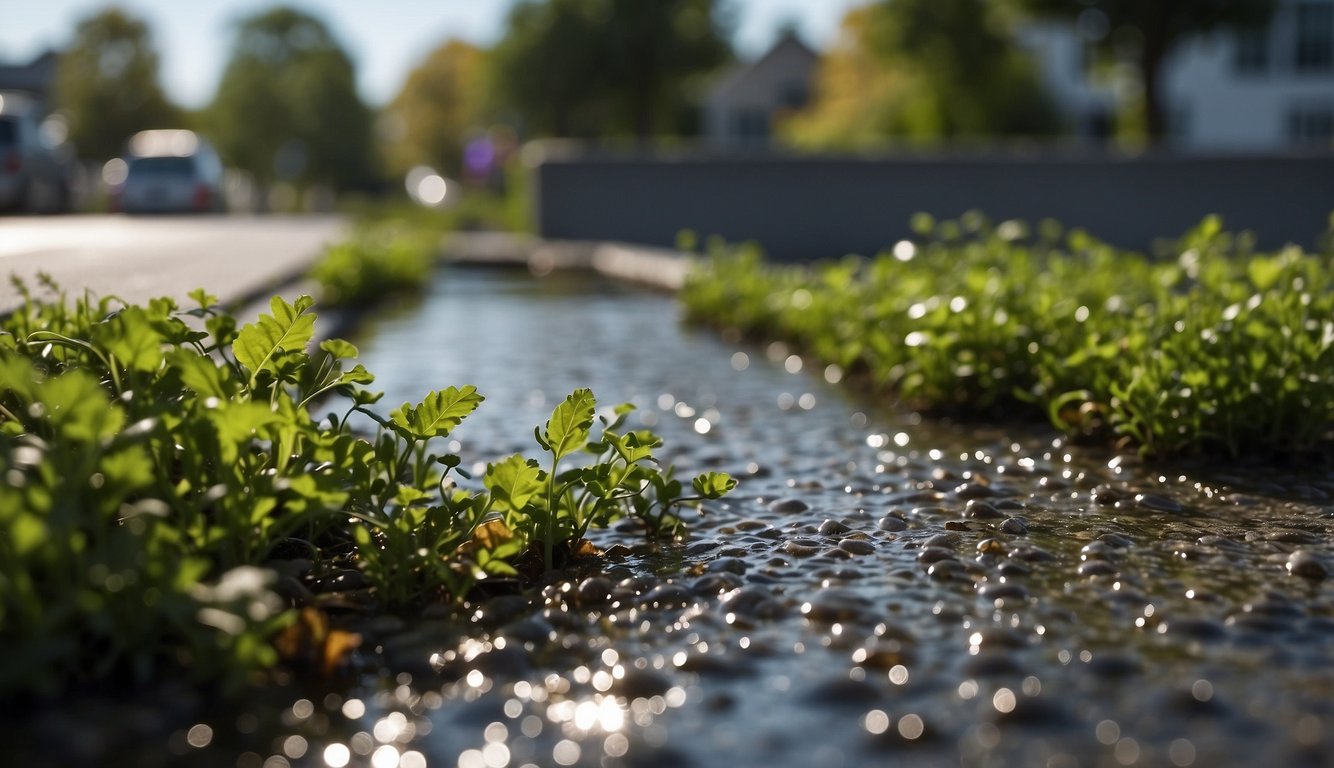
When it comes to urban rainwater management, green infrastructure is a key element that we need to consider. Green infrastructure refers to natural systems and processes that can help manage water, such as wetlands, forests, and green roofs. By incorporating green infrastructure into urban design, we can create a more sustainable and resilient urban environment.
Green Roofs and Pervious Surfaces
One way to integrate green infrastructure into urban rainwater management is through the use of green roofs and pervious surfaces. Green roofs are roofs that are covered with vegetation, which can absorb and retain rainwater. This helps to reduce the amount of runoff that enters the stormwater system. Pervious surfaces, on the other hand, are surfaces that allow water to seep through, such as permeable pavement or gravel. By using pervious surfaces, we can reduce the amount of runoff that enters the stormwater system and help to recharge groundwater.
Urban Landscape and Design
Another way to integrate green infrastructure into rainwater management is through urban landscape and design. By incorporating green spaces, such as parks, greenways, and street trees, we can create areas that can absorb and retain rainwater. This helps to reduce the amount of runoff that enters the stormwater system and can also provide other benefits, such as improved air quality and reduced urban heat island effects. Additionally, landscape design can be used to create bioswales or rain gardens, which are areas that are designed to capture and treat rainwater runoff.
Overall, integrating green infrastructure into urban rainwater management can help to create a more sustainable and resilient urban environment. By using nature-based solutions such as green roofs, pervious surfaces, and urban landscape design, we can reduce the amount of runoff that enters the stormwater system, improve water quality, and create more livable urban spaces.
Policy and Legislation
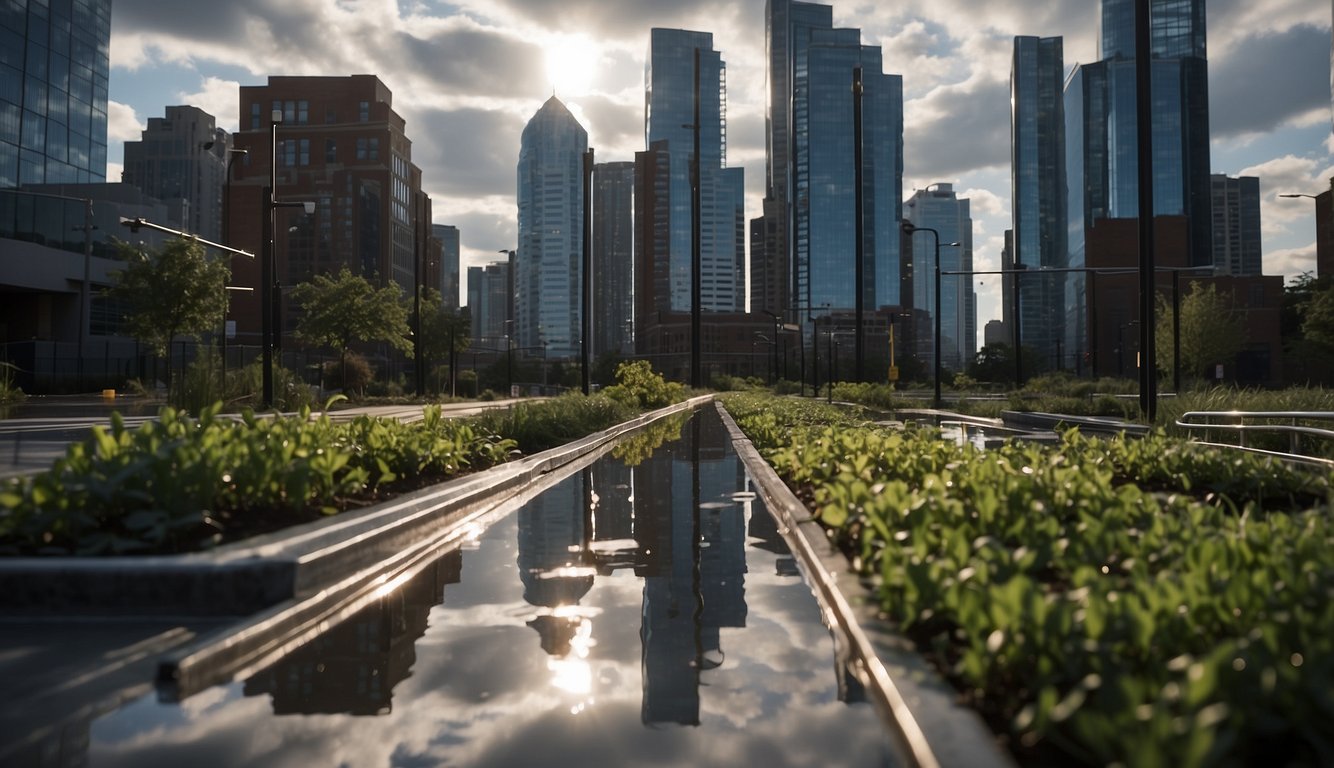
Urban rainwater management is a complex issue that requires the cooperation of various entities, including governmental bodies, NGOs, and private organizations. In this section, we will discuss the policy and legislation related to urban rainwater management in the United States. We will also highlight some case studies and best practices that can serve as models for other cities and regions.
National and Local Regulations
The United States Environmental Protection Agency (EPA) has developed a set of guidelines for managing urban stormwater, which includes rainwater management. These guidelines aim to minimize the negative impact of stormwater runoff on the environment and public health. Many states and local governments have also developed their own regulations and guidelines for rainwater management. For example, the State of California has adopted a comprehensive approach to rainwater management, which includes the use of rainwater harvesting and infiltration techniques.
In addition to regulations, there are also incentives and funding programs that encourage rainwater management practices. The EPA offers grants and loans to support the implementation of green infrastructure projects, which can help manage rainwater in urban areas. Many cities also offer rebates or tax incentives for property owners who install rain gardens, green roofs, or other rainwater management systems.
Case Studies and Best Practices
There are many successful case studies and best practices that can serve as models for other cities and regions. For example, the City of Portland, Oregon has implemented a comprehensive rainwater management program that includes the use of green infrastructure, rain gardens, and rainwater harvesting systems. The program has been successful in reducing the negative impact of stormwater runoff on the environment and public health.
Another example is the City of Philadelphia, which has implemented a stormwater management plan that includes the use of green roofs, rain gardens, and other green infrastructure. The plan has been successful in reducing the amount of stormwater runoff that enters the city’s sewer system, which has resulted in cost savings for the city.
Overall, there are many regulations, incentives, and best practices that can be used to promote urban rainwater management. By working together, we can create sustainable and resilient cities that are better able to manage the challenges of climate change.
Frequently Asked Questions
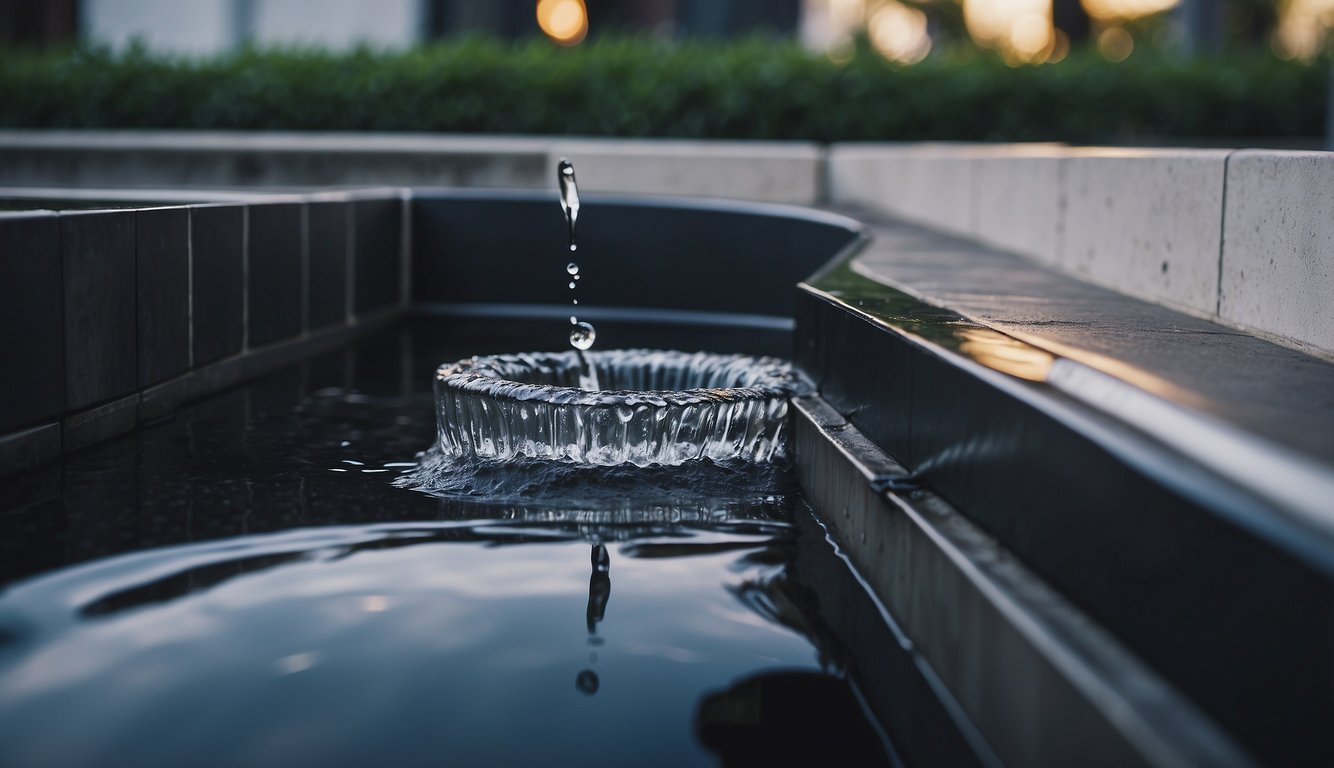
What are the benefits of implementing green infrastructure in urban stormwater management?
Green infrastructure is an approach to stormwater management that utilizes natural systems to manage and treat stormwater runoff. The benefits of implementing green infrastructure in urban stormwater management are numerous. Green infrastructure can help to reduce the amount of stormwater runoff that enters our rivers, lakes, and streams, which can help to improve water quality. Additionally, green infrastructure can help to reduce the risk of flooding in urban areas, which can help to protect public safety and reduce property damage.
How can sustainable stormwater management techniques mitigate urban flooding?
Sustainable stormwater management techniques can help to mitigate urban flooding by reducing the amount of stormwater runoff that enters our rivers, lakes, and streams. By utilizing techniques such as green roofs, rain gardens, and permeable pavement, we can help to capture and treat stormwater runoff before it enters our waterways. This can help to reduce the amount of stormwater runoff that enters our waterways during heavy rain events, which can help to reduce the risk of flooding in urban areas.
What are some effective examples of green stormwater infrastructure in cities?
There are many effective examples of green stormwater infrastructure in cities. Some examples include green roofs, rain gardens, bioswales, and permeable pavement. These techniques can be used in a variety of settings, from residential neighborhoods to commercial developments. By utilizing these techniques, we can help to reduce the amount of stormwater runoff that enters our waterways and improve water quality.
How do rain gardens contribute to urban rainwater management?
Rain gardens are a type of green infrastructure that can help to manage stormwater runoff in urban areas. Rain gardens are designed to capture and treat stormwater runoff from rooftops, driveways, and other impervious surfaces. By utilizing plants and soil to capture and treat stormwater runoff, rain gardens can help to reduce the amount of stormwater runoff that enters our waterways. Additionally, rain gardens can help to improve water quality by filtering pollutants from stormwater runoff.
What role does urban climatology play in designing rainwater management systems?
Urban climatology plays an important role in designing rainwater management systems. By understanding the local climate and weather patterns, we can design rainwater management systems that are effective and efficient. For example, in areas with heavy rainfall, we may need to design rainwater management systems that can handle large volumes of water. In areas with hot and dry climates, we may need to design rainwater management systems that can store and reuse water for irrigation.
How can cities develop and implement a comprehensive rainwater management strategy?
Developing and implementing a comprehensive rainwater management strategy requires a collaborative effort between stakeholders, including city officials, community organizations, and residents. A comprehensive rainwater management strategy should include a variety of techniques, including green infrastructure, stormwater capture and reuse, and public education and outreach. By working together, we can develop and implement a rainwater management strategy that is effective, efficient, and sustainable.

